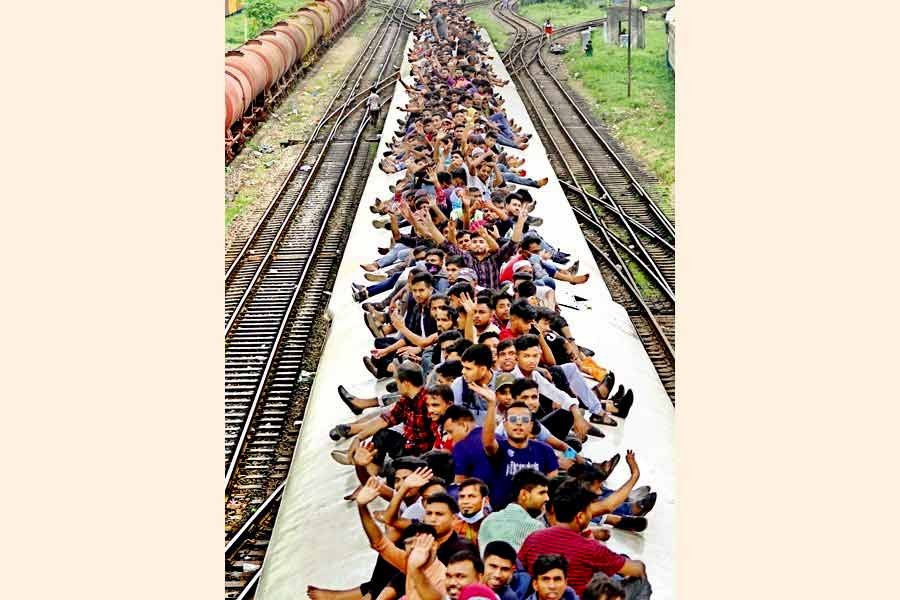That almost seven million mobile phone users left Dhaka city during the holidays of this year's Eid-ul-Azha is no surprise. The absolute number of these holidaymakers would be much higher than 10 million. Understandably, they go to their ancestral homes in villages and rural towns to celebrate the festivals with their near and dear ones.
Newspaper and television reports sometimes justify, sometimes glorify this exodus, comparing it with exploration of ancestral roots of emotional Bangladesh people. Why they go back to villages over and over again taking so much pains of an often risky journey is yet to be explored, sociologically, however.
If around 40 per cent of the 170 million people live in cities and towns, why can't the majority of them make their current living space their 'roots'? When villages are being transformed into small towns with electricity supply and road connectivity, why do a massive number of villagers still migrate to urban centres?
The way the working class people go to serve the industrial and service sectors in Dhaka and a few other cities and towns is not the whole reality. There are people whose livelihoods are rooted in rural areas but they shift their family members to cities. Groups like government officers, public representatives, contractors, well-off rural families and high-end remittance earners prefer staying in urban areas seeking better education for their children, healthcare facilities, and higher status of being metropolitan citizens.
With modernisation spreading all around, a section of half-rural, half-urban minds of moneyed men are also building structures and making facilities in villages, often at the cost of farmland and environment. While wage earners inclusive of some overseas job-holders bring their earnings to villages, a huge sum of money generated through profit, value addition, bribery and extortion in rural areas fly to advanced urban centres like Dhaka. Bangladesh's urban space, especially divisional and major district headquarters, has actually been enriched by steady migration of mufassil talents and in-born entrepreneurs who have constituted a growing urban middle class in the past several decades.
These people wanted to become urban gentlemen and bring up their next generations well versed with refined culture. How far that objective has been achieved remains a question as, for example, many of them have not been enlisted as voters with urban constituencies.
Thus, most of all these groups fail to find love for the city they live in. The beauty and tranquility of villages where they spent their childhood beckon them to take emotional shelter during the festivals.
The reasons why the grown up men and women can't develop their attachment with the areas where they spend most days of the year are not unknown either but people don't want to speak about them.
The city which they could have felt proud of living in is often termed unliveable, thanks to frequent traffic congestion, air and noise pollution and lack of recreational facilities.
Other than educational institutions and offices/shops/factories, there is hardly any scope of communication with other people. In the absence of a mass transit system and adequate number of popular gathering spots, people don't find new friends.
Also, neighbours of urban dwellers are increasingly getting isolated from each other and they fail to receive love and care even in times of crisis.
In such an impervious and hostile atmosphere of a big city, human mind turns nostalgic about fond memories of the past and tries to revisit the time gone by and people with whom the emotional attachment is still strong. Till date, the number of these souls is millions who crowd roads, highways and waterways during the festivals.


